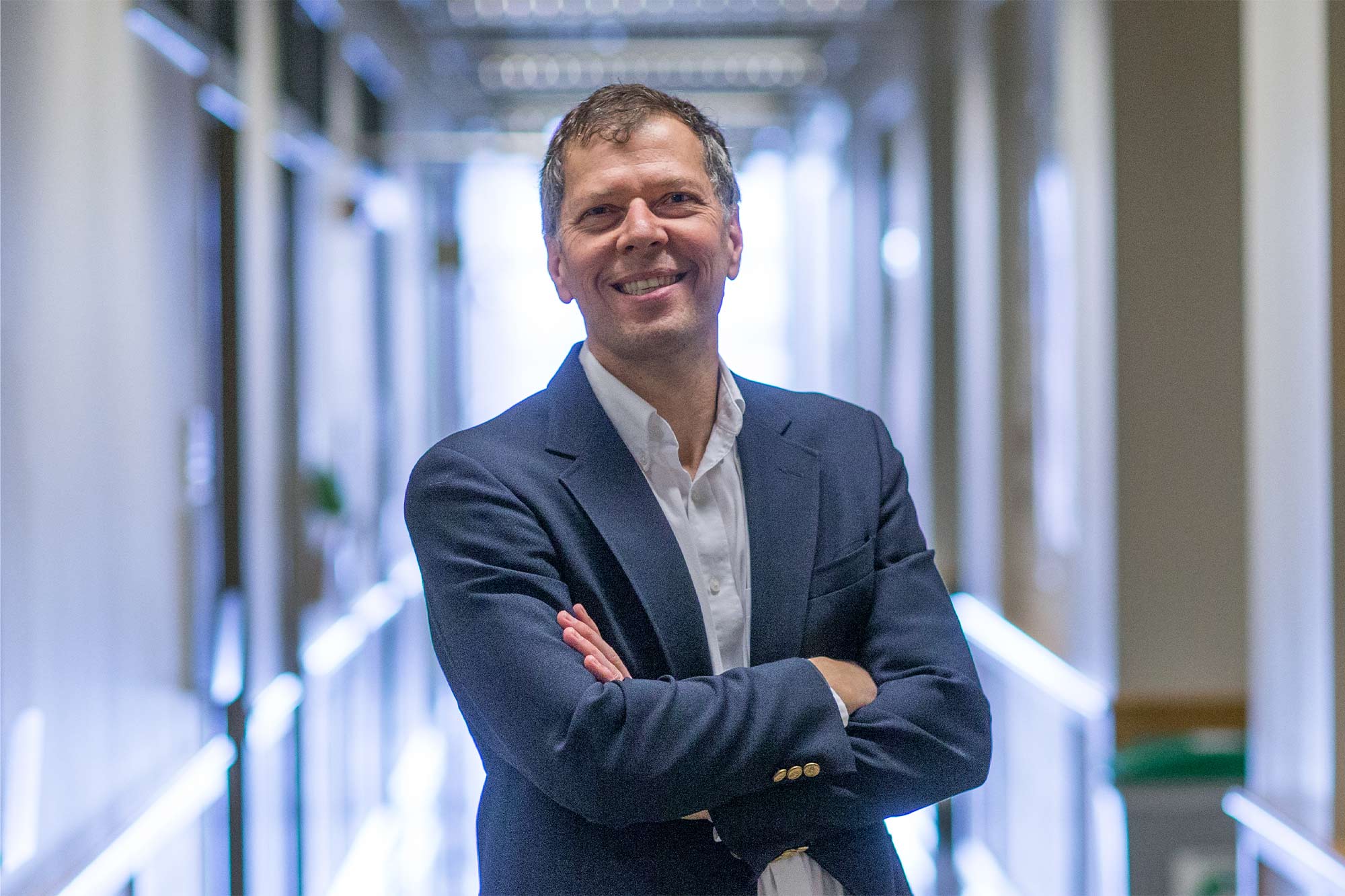
Bigger (and Lighter) Is Better
Loth, who next month steps down as chair of the Mechanical and Aerospace Engineering Department, is a Rolls-Royce Commonwealth Professor and also director of UVA’s Fluids Research Innovation Lab. He illuminated SUMR’s advantages as compared to other wind turbines. (And for the record, he said, it’s pronounced “summer” – not that he would ever dispute anyone who said it differently.)
SUMR’s secret is a patented, aero-elastically flexible downwind design. “Typical turbines are upwind,” Loth said. “We flip the script and place them downwind.”
Doing so lightens the load and permits their longer length, as does the construction of the blades themselves, which are built in segments and hinged. This reduces the mass of the rotor relative to the power it can generate.
“Saving system mass saves money,” Loth said, quoting an aerospace engineering truism.
However, a downwind orientation has traditionally caused some problems – namely noise, wind flow obstruction issues (due to the closeness of the blades to the tower, which is upwind) and electronic-controlling issues.
SUMR has overcome all three, Loth said.
“In terms of noise, our demonstrator turbine turns out to be very quiet,” he said. “And we designed the blades to be far enough apart, so we got rid of the tower-shadow effect. It also has more intelligent control systems. The software is levels above what we could do 10 or 20 years ago.”
Loth said the project had to be scaled down to fit within the Department of Energy’s $6 million project budget. Sizing up, he noted, is just a matter of careful extrapolation.
The Wave of the Future
Given the size of the turbines, their ultimate rollout in perhaps a decade or more won’t be in your backyard, but more likely about 25 miles out to sea. There, the turbines would be less visible to coastal residents and vacationers, and mostly out of the path of migratory birds, which tend to hug the coastline during their travels.
“I think that’s going to happen for sure,” Loth said of U.S. widescale offshore wind farming, which he expects to see span the Eastern coastline from North Carolina to Massachusetts.
Dominion Energy is currently endeavoring to build a large offshore wind power project in the United States, off Virginia Beach.
SUMR is one example of the type of projects UVA is encouraging through its Grand Challenges Research Investments, which are meant to leverage the capacity for the University’s brightest minds to innovate solutions to some of the biggest problems that confront the world. UVA announced recently it will apply $60 million toward the development of clean-energy research and other measures to promote environmental resilience and sustainability.
Loth joined the UVA faculty in 2010. In 2015, Popular Science named him one of its 12 “Brilliant Minds Behind The New Energy Revolution” for his promising turbine design.
Then and now, he gives ample credit to his partners, who have helped him solve problems and publish papers that have moved the project forward. Current or recent UVA doctoral students who worked on the demonstration project include Chao “Chris” Qin, now a UVA research scientist, and Vanessa Awate, Michael Jeong, Meghan Kaminski, Carlos Noyes and Juliet Simpson.
“Like so many others, we want to do whatever we can to save the planet, and we are excited to do so with wind,” Loth said.
Loth first worked on wind turbine projects as an undergraduate in aerospace engineering at West Virginia University, nearly 40 years ago. His graduate degrees are in aerospace engineering as well. He earned his master’s from Pennsylvania State University and his doctorate from the University of Michigan.
But wind left his life as he worked on other types of engineering projects, not only for major universities, but for the Naval Research Laboratory in Washington, D.C., and other employers. He has developed jet propulsion systems, even spacecraft nozzles. He holds several U.S. patents.
Like a turbine, though, his career has circled back. SUMR could be the innovation of his that changes the world, although Loth remains modest about the possibility.
"flow" - Google News
June 27, 2022 at 06:41PM
https://ift.tt/rwxdbD2
Go-With-the-Flow Wind Turbine, Conceived by UVA Prof, Completes Successful Demo - UVA Today
"flow" - Google News
https://ift.tt/kxHPgGI
https://ift.tt/1Emf0P7
Bagikan Berita Ini














0 Response to "Go-With-the-Flow Wind Turbine, Conceived by UVA Prof, Completes Successful Demo - UVA Today"
Post a Comment